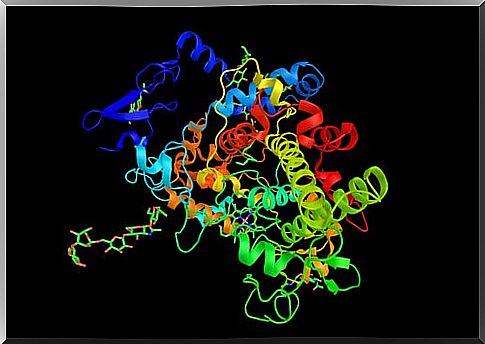Ibuprofen
Ibuprofen belongs to the group of non-steroidal anti-inflammatory drugs (NSAIDs) and is one of the first options for pain (analgesic), inflammation or fever.

It is estimated that almost half of the population usually suffer from headaches, 30 million people suffer from low back pain and another many are affected by pain associated with cancer, heart disease and other diseases. In the treatment of most of these cases, Ibuprofen will participate. This gives us an idea of how widely used this drug is.
What is Ibuprofen for?
Ibuprofen is a medicine that can be found either in the form of pills or envelopes or as a syrup.
In either case, it serves as an anti-inflammatory, analgesic and antipyretic.
The antipyretic effects start after one hour and peak at 2 – 4 hours and last for up to 6 – 8 hours. To achieve anti-inflammatory effects may require up to two weeks of treatment.
The main indicators collected for Ibuprofen are as follows:
- Treatment of conditions that course with pain or inflammation such as headaches, migraines, dysmenorrhea, pharyngitis, otitis or muscle pain.
- Symptomatic treatment of fever.
- In diseases such as juvenile rheumatoid arthritis and rheumatic processes (arthrosis).
- Treatment of soft tissue injuries such as sprains.
Mechanism of action for Ibuprofen
The mechanism of action of Ibuprofen is the inhibition of prostaglandin synthesis. This inhibition is due to its competitive and reversible union with the cyclooxygenase enzyme, which transforms arachidonic acid into so-called prostaglandins.

Structurally, Ibuprofen is a derivative of propionic acid. It is a racemic compound (two compounds that are mirror images of each other), its activity falls almost entirely on the S-isomer.
Pharmacokinetics: what happens to ibuprofen inside the body?
This is a poorly water-soluble drug. However, it is often used in the form of arginate or lysinate salts to improve its solubility and pharmacokinetic profile. Its most important features are as follows:
- Absorption: the most used routes of administration are oral and parenteral. Oral administration is good and quick and its bioavailability is 80% (varies depending on the pharmaceutical form). Arginine and lysine salts favor its solubilization, so it absorbs even more quickly.
- Distribution: Ibuprofen effectively binds to plasma proteins (90 – 9%). It is capable of diffusing through tissues, passing into synovial fluid and also crossing the placental barrier. On the other hand, its presence in the milk of women who were breastfeeding was not detected.
- Metabolism: its major metabolization occurs in the liver by hydroxylation and carboxylation, generating several inactive metabolites.
- Excretion: is mainly via urine (90%) and minorly in faeces. Its complete elimination from the body takes place after 24 hours.
Dosage
However, in general we can summarize that:
- In adults, oral administration should be 400 – 600 mg every 6/8 hours.
- In children aged 3 months to 11 years it is recommended to administer 20-30 mg/kg/day divided into 3 or 4 doses. Still, safety and efficacy in children under 3 months of age have not yet been evaluated.

The parenteral route is only recommended for adults, never exceeding 600 mg every 6 – 8 hours. You should switch to oral administration of Ibuprofen as much as possible. It is also necessary to take into account the existence of kidney and liver diseases that will force you to always and with caution use the lowest possible dose.
Contraindications and precautions for Ibuprofen
This drug is contraindicated in some situations such as:
- Hypersensitivity. Cases of cross-hypersensitivity reactions with other NSAIDs have been described, so it should also not be used in case of allergy to salicylates. These reactions are specifically frequent in asthmatic patients.
- Peptic ulcer, inflammatory bowel disease, or any process that increases the risk of gastrointestinal bleeding. Due to the inhibition of prostaglandin synthesis, ibuprofen could increase the risk of gastrointestinal bleeding and perforation. This is why it is recommended to administer Ibuprofen and any NSAIDs with food to reduce gastric damage. Another option would be to combine it with an antiulcer (anti H2 and PPI).
- Coagulation alterations. It has certain antiplatelet effects, increasing bleeding time.
- Renal insufficiency. It is eliminated in the urine, so in this situation it could accumulate in the body in a toxic way. It could also decrease renal blood flow.
- Liver failure. Parallel to the above, Ibuprofen is metabolized in the liver, so in cases of liver failure it could accumulate in the body.
- Heart failure and uncontrolled hypertension.
- Pregnancy. This medication is contraindicated during the third trimester of pregnancy. In addition, its use for prolonged periods in the first two trimesters is not recommended.
Interactions
There are many drugs that can change the behavior of Ibuprofen and NSAIDs in the body, either by reducing their effectiveness or increasing the possibility of suffering adverse effects. Among them are the following:
- Ines. Ibuprofen could reduce the antiplatelet function of acetylsalicylic acid when administered together.
- Alcohol. It can enhance its toxicity because both metallize the liver and “saturate it with work”.

- Antihypertensives. Possible reduction in antihypertensive effect. In patients with compromised renal function, deterioration may precipitate (dehydrated or elderly patients).
- Oral anticoagulants, heparin. Possible increased anticoagulant effect with risk of bleeding. Periodic checks of clotting indices are advised.
- Antidiabetics. Possible increase in hypoglycemic tissues by reducing renal excretion.
- Acetaminophen. Simultaneous and prolonged use of paracetamol and NSAIDs may increase the risk of adverse renal effects.
Adverse Reactions of Ibuprofen
The adverse effects originate mainly from the NSAID’s mechanism of action, the inhibition of cyclooxygenase 1 (COX-1) and often appear at doses above 3,200 mg/day:
- Gastrointestinal. Possible onset of dyspepsia, diarrhea, nausea, abdominal pain or gastrointestinal bleeding due to suppression of gastro-protective prostaglandins appear.
- Dermatological. These are usually hypersensitivity reactions that progress with rashes, urticaria or erythema. Anaphylactic reactions typically occur in patients with a history of hypersensitivity to acetylsalicylic acid and other NSAIDs.
- Central nervous system: asthenia, drowsiness, headache, nausea.
- Hematologic. Bleeding time may be prolonged.
- Cardiovascular. Hypertension or heart failure could appear.
- Kidneys. Increment of urea nitrogen and precipitation of renal crises.









